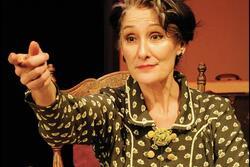Pink, Green, Blue: What Color is YOUR Torah?
By Melissa B. Simon
As a young woman growing up in the Jewish community, I often sought out a woman's voice in the biblical text. I wanted to hear more from our matriarchs and yearned to know the real story behind Dina, Miriam, and Tamar. Too often I felt like I was confronted by Jewish publications that seemed dominated by the male perspective and left me hungry for something different.
I was thrilled when I discovered the field of Jewish feminist thought and books about Jewish women's experiences. I devoured books by Letty Cottin Pogrebin,Judith Plaskow, and Blu Greenberg. Iread the poetry of Merle Feld who reminded me that "We all Stood Together" atSinai. I met inspirational leaders who empowered me to study to become a Rabbi.
This summer I had the opportunity to study at the Drisha Institute for Jewish Education, a center for women's study ofJewish text, and to take a course entitled "Gender and Judaism: Feminist Critique of Traditional Jewish Theology" taught by Rachel Gordin. In the course, we explored the impact on the Jewish world from women's entry into the Beit Midrash (House ofStudy). Finally, those long silenced voices of women are being given opportunities to be heard.
In December 2007, URJ Press published The Torah: AWomen's Commentary, edited by Tamara Cohn Eskenazi and Andrea Weiss. (In a world where "anonymous"was often a woman, it is of tremendous importance to give credit where creditis due.) It is an attempt to provide thevoices and perspectives of women that I, and many women and men like me, hadsought. The text is an importantaddition to every synagogue and individual's library. The hunter green volume includes not only theHebrew text and a gender-sensitive translation, but also a myriad of commentaries,reflecting the perspective of female scholars from a variety of backgrounds.
When I was in mylocal bookstore recently, picking up Danya Ruttenberg's new book Surprisedby God: How I Learned to Stop Worrying and Love Religion (which you'll hearmore about here soon), a small pink book piqued my interest. It was the JPS Bible, the pocket-sizededition, but it was a soft rose color. Perhaps the Jewish Publication Society is also attempting to reach outto women readers, but if so, the attempt is somewhat misguided. Assuming that wrapping the ancient text ofour tradition in a nice "gender-appropriate" package would make the holy wordsmore attractive to women is bordering on offensive. Just as women don't need our tallitot orkippot to necessarily be lacey or floral, so, too, we do not need our Torah tobe color-coded to make it feel like it's ours.
What is moreimportant is the way in which the text is presented to us as readers. Many Christian denominations have beenpublishing "theme bibles" targeted at sub-groups in the population. The "TeenBible," "Women's Bible" and "Bible for people in recovery" each take the textof the Bible and add a different slant through the study questions andcommentaries. This is what The Torah:A Women's Commentary does, to helpwomen and men see the ancient text through a new lens. It is not that women's voices are better, ofcourse, but rather it is crucial for all the voices to be heard and foreveryone to have a seat in the Beit Midrash.






